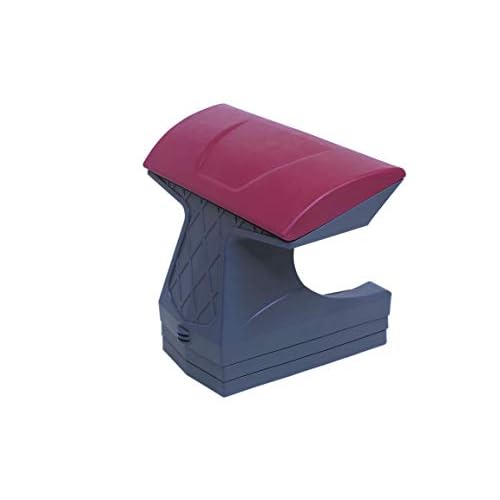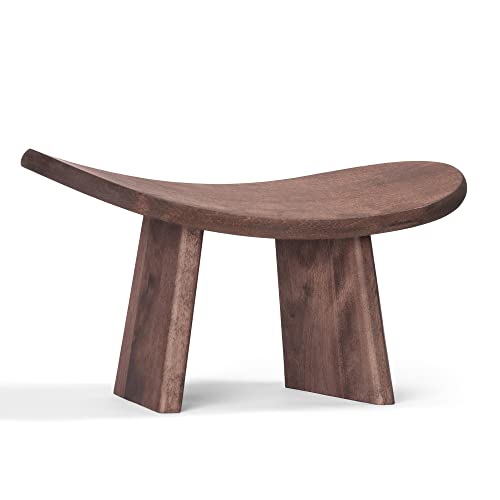
You’re no stranger to the benefits of yoga, but have you truly unlocked its potential for enhancing flexibility? Discover the top 10 yoga poses designed to take your flexibility to new heights and transform your practice. From the calming Child’s Pose to the invigorating Warrior II, each pose serves a unique purpose in your journey towards increased flexibility and overall well-being. So, grab your mat, center your mind, and prepare to embark on a transformative exploration of movement and mindfulness through these essential yoga poses.
Downward-Facing Dog
Engage your core muscles while stretching your hamstrings and calves in the classic yoga pose known as Downward-Facing Dog. Begin on your hands and knees, with your hands slightly in front of your shoulders. Lift your hips up and back, straightening your arms and legs to form an inverted V shape. Press your heels towards the floor while keeping your head between your arms. Focus on lengthening your spine and pushing through your palms to fully engage your muscles.
Downward-Facing Dog is a versatile pose that not only stretches the back of your legs but also strengthens your arms, shoulders, and core. It helps improve flexibility in your hamstrings and calves while also relieving tension in your spine. Take deep breaths as you hold the pose, aiming to relax into the stretch with each exhale. Remember to keep your neck relaxed and gaze towards your feet to maintain proper alignment.
Practice Downward-Facing Dog regularly to increase flexibility in your entire body and build strength in key muscle groups. This pose is a foundational element of any yoga practice, offering a multitude of physical and mental benefits.
Forward Fold
How can you deepen your stretch and enhance your flexibility with the yoga pose known as Forward Fold?
Forward Fold, also known as Uttanasana, is a powerful posture that targets the hamstrings, calves, and hips while also promoting relaxation and stress relief.
To perform Forward Fold correctly, stand tall with your feet hip-width apart and hinge at the hips as you fold forward, bringing your hands towards the floor or your shins.
For a deeper stretch, you can bend your knees slightly to release tension in the lower back and hamstrings. Engage your core and relax your neck and shoulders to fully experience the benefits of this pose.
You can enhance the stretch by grabbing opposite elbows and swaying gently from side to side or by using a yoga block to bring the floor closer to you.
Remember to breathe deeply and hold the pose for a few breaths to improve flexibility and release any tightness in your body.
Pigeon Pose
To enhance your hip flexibility and release tension in your glutes and hip flexors, try incorporating the yoga pose known as Pigeon Pose into your practice. Pigeon Pose is a fantastic stretch that targets the hip flexors, groin, and lower back. Start in a plank position, bring your right knee forward towards your right hand, and place your right ankle near your left wrist. Extend your left leg behind you, keeping your hips square. Lower yourself down onto your forearms or all the way to the ground, feeling a deep stretch in your right hip.
You can modify this pose by using props like blocks or blankets for support. Stay in Pigeon Pose for a few breaths, focusing on relaxing into the stretch. Switch sides to ensure both hips receive equal attention. Regular practice of Pigeon Pose can help improve hip mobility, alleviate lower back pain, and release built-up tension in the hip area. Add this pose to your routine for increased flexibility and overall well-being.
Cobra Pose
Curiously, have you ever tried Cobra Pose in your yoga practice for strengthening your back muscles and improving spinal flexibility? This pose, also known as Bhujangasana, is a fantastic way to engage your lower back and open up your chest.
To practice Cobra Pose, lie on your stomach with your palms flat on the ground under your shoulders. As you inhale, gently lift your chest off the ground while keeping your elbows close to your body. This movement helps to stretch and strengthen the muscles along your spine, promoting better posture and flexibility.
Cobra Pose isn’t only great for your physical health but also for your mental well-being. As you hold the pose, focus on your breath and allow any tension in your back to release gradually. Regular practice of Cobra Pose can aid in relieving lower back pain and improving your overall flexibility.
Remember to listen to your body and only go as far as feels comfortable. Add this pose to your yoga routine to experience the benefits of a stronger, more flexible spine.
Triangle Pose
Engage your core and stretch your sides with the invigorating Triangle Pose during your yoga practice. Begin by standing with your feet wide apart, toes pointing forward. Turn your right foot out 90 degrees and extend your arms out to the sides, parallel to the floor. Exhale as you reach towards your right foot, hinging at the hip. Place your right hand on your shin, ankle, or the floor outside your foot, while extending your left hand towards the ceiling. Keep your chest open and gaze up at your left hand.
Feel the deep stretch along the sides of your body, from your fingertips down to your extended foot. Hold the pose for a few breaths, then inhale as you slowly return to the starting position. Repeat on the other side to balance the stretch and benefits.
Triangle Pose not only improves flexibility but also strengthens your legs, opens your hips, and improves overall posture.
Seated Forward Bend
During your yoga session, gently fold forward from the hips into the Seated Forward Bend pose to stretch your hamstrings and lower back. This pose is excellent for increasing flexibility in these areas.
Begin by sitting on the floor with your legs extended in front of you. Inhale as you lengthen your spine, and then exhale as you hinge at the hips to fold forward. Keep your back straight as you reach towards your feet. If you’re a beginner, you can use a yoga strap around your feet to help you reach further.
Hold the stretch for several breaths, feeling the release in your hamstrings and lower back. Remember to relax your neck and shoulders. With regular practice, the Seated Forward Bend can help improve your posture and alleviate tension in the back.
Enjoy the sensation of the stretch and breathe deeply as you hold the pose.
Bridge Pose
To practice the Bridge Pose, lie on your back with your knees bent and feet flat on the floor. Keep your arms by your sides, palms facing down. Press your feet into the floor as you lift your hips up towards the ceiling. Engage your glutes and core muscles to support your lower back. Hold the pose for a few breaths, then slowly lower your hips back down to the floor.
Bridge Pose is great for stretching the chest, neck, and spine. It also helps to strengthen the back, buttocks, and hamstrings. Regular practice can improve posture and alleviate back pain. Remember to breathe deeply and relax into the pose, allowing your body to open up and release tension.
To deepen the stretch, you can interlace your fingers underneath you and roll your shoulders underneath you to lift your chest towards your chin. Be mindful not to strain your neck or overarch your back. Listen to your body and only go as far as feels comfortable. Bridge Pose is a wonderful way to increase flexibility and strengthen key muscle groups in the body.
Child’s Pose
Looking to relax and stretch your back and hips gently? Child’s Pose is the perfect yoga posture for you. This pose is a calming and restorative posture that can help release tension in your lower back, shoulders, and chest. To get into Child’s Pose, start by kneeling on the mat with your big toes touching and knees spread apart. Slowly lower your hips back towards your heels as you reach your arms forward, resting your forehead on the mat. Take deep breaths in this position, allowing your spine to lengthen and your hips to gently stretch.
Child’s Pose is a great way to relieve stress and fatigue while promoting relaxation. It also helps in elongating the lower back muscles and increasing flexibility in the hips. If you have tightness in your back or shoulders, practicing Child’s Pose regularly can provide relief and improve your overall flexibility. Spend a few minutes in this pose at the end of your yoga practice to wind down and relax your body and mind.
Warrior II
Assume a strong stance and extend your arms out in opposite directions to enter the empowering yoga pose known as Warrior II. This pose, also called Virabhadrasana II, strengthens your legs, opens your hips, and improves your focus and balance.
Begin by stepping your feet wide apart, keeping them parallel to each other. Turn your right foot out 90 degrees and your left foot slightly inward. Bend your right knee over your right ankle, making sure it’s positioned directly above your heel. Keep your torso upright and extend your arms out to the sides at shoulder height, palms facing down.
Gaze over your right fingertips, creating a straight line from one hand to the other. Engage your core muscles and relax your shoulders away from your ears. Hold this pose for several breaths before switching to the other side. Warrior II is a powerful posture that energizes the entire body while enhancing your flexibility and strength.
Standing Forward Bend
Incorporate the hamstring stretch of the Standing Forward Bend to complement the hip-opening benefits of the Warrior II pose. This pose helps release tension in the lower back, hamstrings, and calves while also promoting relaxation. To perform the Standing Forward Bend, stand with your feet hip-width apart, hinge at the hips, and slowly fold forward. Allow your head and neck to relax, reaching towards the floor or your shins. Bend your knees slightly if you feel any strain in your lower back or hamstrings.
While in this pose, focus on breathing deeply to increase the stretch and release any tightness in the back of your legs. Hold the pose for several breaths, feeling the elongation in your spine and the opening in your hips. Standing Forward Bend is an excellent way to improve flexibility in the hamstrings, which can help alleviate lower back pain and improve your overall posture. Practice this pose regularly to enhance your flexibility and promote a sense of calm and relaxation.
Trending Products














